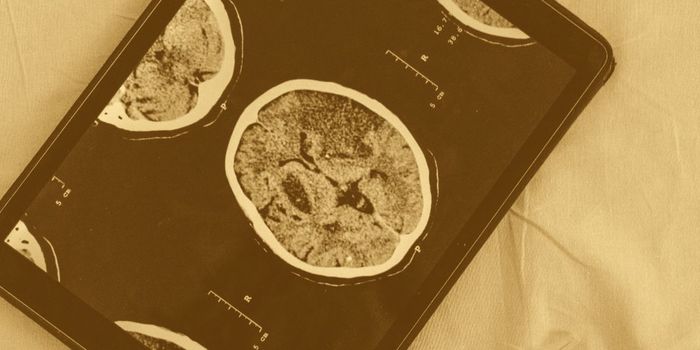Some people learn a new skill right away, while others cannot. What is it about their brains that accounts for the variation?

A group of researchers has done a study with a network science approach, measuring the connections between different brain regions as participants learned to play a simple game. The differences in neural activity between the quickest and slowest learners give insight into brain region function and interaction during the learning process.
Using unnecessary parts of the brain for a given task (over-thinking the problem) plays a critical role in this difference, according to the study conducted by Danielle Bassett, the Skirkanich Assistant Professor of Innovation in the University of Pennsylvania School of Engineering and Applied Science's departments of Bioengineering and of Electrical and Systems Engineering; Muzhi Yang, a graduate student in Penn Arts & Science's Applied Mathematics and Computational Science program; Nicholas Wymbs of the Human Brain Physiology and Stimulation Laboratory at Johns Hopkins; and Scott Grafton of the UCSB Brain Imaging Center. The study was published in Nature Neuroscience.
Study participants at UCSB played a simple game while their brains were scanned with fMRI. The technique records neural activity by tracking the flow of blood in the brain, showing how regions are involved in a given task. Participants responded to a sequence of color-coded notes by pressing the corresponding button on a hand-held controller. Six pre-determined sequences of 10 notes each were shown several times during the scanning sessions. Researchers told participants to play the sequences as quickly and as accurately as possible, responding to the cues they saw on a screen.
Participants also had to practice the sequences at home with researchers remotely monitoring these sessions. The participants came back to the scanner six weeks later, to see how well their home practice sessions had helped them to master the skill. All of the participants' completion times dropped during the course of the study but did so at different rates. Some picked up the sequences immediately, while others gradually improved during the six-week period.
Bassett developed analysis methods to see what was happening in the participants' brains that correlated with these differences. Instead of trying to find a single spot in the brain that was more or less active, the researchers investigated the learning process as the product of a complex, dynamic network.
The researchers compared the activation patterns of 112 anatomical regions of the brain and measured the degree to which they mirrored each another. The more two regions' patterns matched, the more they were considered to be in communication. Graphing those connections produced hot spots of highly interconnected regions.
According to Bassett, "Network scientists see what is known as community structure in this graph pattern. There are sets of nodes in a network that are really densely interconnected to each other. Everything else is either independent or very loosely connected with only a few lines."
Using algorithms to determine which nodes are incorporated into these clusters and how their interactions change over time, the researchers measured how common it was for any two nodes to remain in the same cluster while subjects practiced the same sequence about 10 times. They found overarching trends about how regions responsible for different functions worked together.
"If we look just at the visual and the motor blocks, they have a lot of connectivity between them during the first few trials, but, as the experiment progresses, they become essentially autonomous," Bassett explained. "The part of the brain that controls the movement of your fingers and the part of your brain that processes the visual stimulus don't really interact at all by the end."
The researchers were seeing the learning process on the neurological level. Participants' brains reorganized the flow of activity as they picked up this new skill.
Bassett said, "What we think is happening is that they see the first few elements of a sequence and realize which one it is. Then they can play it from motor memory. There no longer needs to be constant communication between the visual stream and their motor control."
Participants who showed decreased neural activity learned the fastest. The most important distinction was in areas not directly related to seeing the cues or playing the notes: the frontal cortex and the anterior cingulate cortex.
"Those two areas are hubs of the cognitive control network," Bassett said. "It's the people who can turn off the communication to these parts of their brain the quickest who have the steepest drop-off in their completion times."
These cognitive control centers are thought to be most responsible for "executive function." While good executive function is necessary for complex tasks, it might actually be a hindrance to mastering simple ones.
"It seems like those other parts are getting in the way for the slower learners. It's almost like they're trying too hard and overthinking it," Bassett said.
The frontal cortex and anterior cingulate cortex are some of the last regions of the brain to fully develop in humans. This may explain how children can acquire new skills so quickly as compared to adults.









